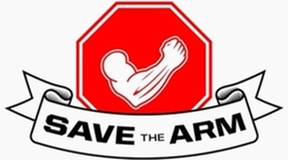
Protected Upper Extremity Conditions include a variety of conditions that do not involve lymphedema or end stage renal disease, or the need to protect the arm due to future or current hemodialysis access. As such, the types of conditions covered under the heading of protected upper extremity condition is a broad and evolving operational definition. Some common types of protected upper extremity conditions are as follows:
1. Reflex Sympathetic Dystrophy (RSD)/ Complex Regional Pain Syndrome(CPRS):
3. Shoulder-Hand Syndrome
4. Causalgia
5. Sudecks Atrophy
6. Anomalous Arterial and Venous Disorders of the Upper Extremity:
7. Arthrogryposis: Read about this patients experience regarding her difficulty in receiving I.V. and PICC line access and for a complete list of resources for this condition, check out AMC Support.
8. Previous Difficult Experience: Many times patients report that they have a preferred site for receiving phlebotomy and/or intramuscular or subcutaneous injections. Patients know their bodies best and often have learned from previous experience which location is usually easiest to access or at least know the site where they prefer to receive injections and invasive interventions. Whenever possible, it is important for medical personnel to realize the importance of:
ASSESS whether or not invasive intervention is truly necessary and whether the patient has any contradictions to such interventions and that the site, time, medication or intervention, dose and patient are all appropriate for the planned intervention.
ASK patients where they prefer to have access or invasive interventions attempted AND if the patient has any area where interventions should not be attempted or where they have experienced problems in the past.
AFFIRM that the underlying anatomy and patients condition and the surrounding environment will support the delivery of such intervention and that the person attempting the intervention has all the necessary tools, skills and safety systems in place to assure success.
ATTEMPT only once with an intervention mandatory time out if the attempt is not successful. During which the reason for failure is clearly explained to the patient and.or their family
ASSURE that following the intervention that the intervention went as planned and report and study as a system when it did not. Monitor the site of the intervention to assure that no complications occur.



